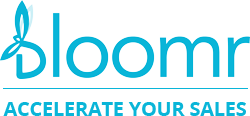How to expand your Business through Channels?
Channels are a critical component for expanding Business by leveraging the efficiencies of the Channel & potential of the Product. It is important for entrepreneurs to make the most optimal choice of channel type & right mix of promotional programs as per their unique situation to scale business. As there are multiple stakeholders involved within the organization & externally, it is critical to design Channels & promotional programs to maximize Business with a motto of ‘Win-Win’ for all the stakeholders.

Anil Joseph
- Is your Channel a multiplier or a Headache?
- Do you think you have the most optimal Channel solution for the Sales of your Product & Services?
- Do your channel and promotions complement your Sales programs?
It is important to understand the interplay of the different factors impacting Business as revenues are generated through Channel & its key elements
Sales through Channels have multiple factors which impact the Business Delivery & Channel Design
Product: The characteristics of a Product like size, weight, expiry timeline, etc determine its design
Market: The nuances and dynamics of consumer needs shape the design of appropriate channel
Company: Channel Structure is the function of the company’s resources – Financial, People, Product Range, stage of its Business evolution & its Vision
Channel Type: Key elements – Kind of Channels available, cost of its operation & its service capability Environment: Even external elements like FSSAI, Drug License, PCB requirements, socio-cultural, legal & technological framework influence the choice
Key Functions of the Channel
It is important to understand the key function of the channel to unleash its energy
- Selling Effort
- Credit Facility
- Inventory
- Physical Distribution
- Post Sales Service
The next element is managing the Distribution Channel to deliver the optimal performance
The way to design Channel Management solution is to start from Business Strategy & end up creating an Execution plan
- Business Strategy
- Sales Strategy
- Channel Strategy
- Sales Program Design
- Manpower
- Relationship
- Network
- Service Capability
- Sales Program Execution
- Training
- Motivation
- Engagement
- Sales Administration
The trick in getting a successful solution is getting all elements are aligned
It is important to understand the different types of Channels available and their Key specialization for MSMEs to select the right channel type
The Different Types of Channels & their specialization
- Logistics Service Provider – They undertake all Distribution Activity to CFA once finished goods are handed over from Factory.
- CFAs – Breaking Bulk, warehousing & transporting to Channel Partners/Key Accounts
- Channel Financing Agencies –These could be banks or Financial Institutions that finance Channel Partners
- Wholesalers/Semi Wholesalers –Aggregators, Focusses on fast-moving Products & operates in local geography
- Dealers – The last element of the Channel chain who connects/sells the company’s products to Customers & also provides technical inputs as well as Credit
- Service Centres – These servicing centres /consumption points wherein Spare Parts, Consumables, providing AMC support & in select cases product itself is sold
- E- Com B2B model – In E-Com B2B service model undertake Delivery to Key Accounts in Multiple locations. This is a unique channel solution for start-ups to get quick scale-up
Promotional Programs needs to be backed by Back to Basics Sales Effort
All the Promotional Programs for the Channel Program would be successful only if it is backed by ‘Back to Basics’ Sales Efforts in terms of Customer visit as per a plan, with more focus on Selling through the Channels, acquisition of New Consumers, thus improving & deepening channel relationship which can turn out to be a strategic advantage
Let’s look at a case study of Preethi a domestic appliances Brand with 75 % Market share of Mixer- Grinders in Tamil Nadu based in South India & it’s acquisition story by Philips to understand this further. As I studied Preethi & its Sales effort practices, they had probably the most effective Sales Team which had ensured pull for the Preethi Brand & maintained Pricing discipline by the efforts of their sales team & founder’s support.
Preethi’s sales team initially started as Technicians in their plant and after 3-4 years graduated as Service technicians wherein they’ll put in another 4-5 years before graduating to frontline Sales roles. These sales folks used to visit Dealerships ( Regional Consumer Durable Chains with turnover ranging from Rs.15 Crores to Rs.600 Crores ) Monday to Saturday strictly as per route plan, file their Expense statement along with orders collected on Saturday for the execution of the orders for the week.
They were holistic solution providers to the trade like providing Merchandising support & even service solutions when there used to be product complaints of motors they used to carry it along to provide instant replacement and solutions, unlike competition sales folks as these folks had production & service experience.
This resulted in Preethi Brand gaining Trust of the Trade & most preferred Brand amongst Trade & Consumers in South India. This led to interest from large players like Sony studying their pricing discipline in the Market & finally Philips acquired the Preethi Brand in India.
While designing Promotional Programs, there are two options available
Sell-In programs are designed to maximize the pipeline filling of the Channels of Distribution
Sell-Out programs are designed to improve the product movement from Channel to the Consumer
Companies should use both the type of program factoring in the unique proposition of its product. Few examples of Sell in & Sell Out Programs:
| Sell In Programs | Sell Out Programs |
| Cash Discount on immediate payment | Price Off on Product |
| Discount on Offtake of a certain quantity | Product + Service Free ( for a limited period) Offer |
| Bonus Discounts for achieving Quarterly and Yearly Targets | Free Product Demo |
| Free goods Offer – On purchase of certain quantity; few units given as free | Product + initial Training free |
| Cross Product Promotion – Offer a focus product free with a fast-moving Product | Product on lease & Technician support at premises |
Pros of Sell-In and Sell- Out
| Sell In Programs | Sell Out Programs |
| Ensures adequate stocks of the Product and Focus Range available with the Channel | Triggers reason for purchase & usage by the end customer |
| Improved profitability of the Channel to push more products | Service/Technician support removes blockers of product application at the end customers |
| Improves visibility, product promotion & engagement with the end customers | Product on lease/Financing solutions removes the challenges initial investment |
Cons of Sell-In and Sell-Out
| Sell In Programs | Sell Out Programs |
| Too much Sales into the Channel without adequate product movement will choke the Channel | Use of Activation/Product Demo if not linked to time bound Sales, it would increase overheads |
| Too much focus on off-take based on Channel scheme can lead to working capital blockages | Add on Offers like Training/Service should be limited offer to avoid exploitation of such programs |
| Cross Product promo can lead to a high inventory of slow-moving products | If Technician on-premises/Product Support is not on chargeable basis, it would have a huge selling cost |
Opt for improving Business through Channels only post doing SWOT Analysis (Strength, Weakness, Opportunity & Threats) of the Product/situation
SWOT Analysis will give a fair idea towards key actions to be taken for improving Business through Channels
Key Elements to keep in mind
- The Program should aim to increase Business through Channel by improving Channel Partner’s Topline and Bottomline
- Channel should be rewarded factoring in their selling effort
- Leverage the SWOT analysis to have right mix of the promotional program
- Program design should factor in the Business objective, resources constraints the & key strengths of manufacturer & channel partners
Great, so what do I do next?
Ten Action Points for effective Channel Management to scale your Business
- SWOT Analysis is a good data point to begin
- Define Business Objective & Timelines
- Allocate Budgets & Resources
- Opt for most optimal Promotional Program
- Define Success Metrics with timelines
- Run the Program as a pilot – criteria could be Geography or Timeline
- Improvise the program post the pilot results
- Scale up the Program
- Track the progress in a time-bound manner
- Focus on Execution to maximize effectiveness

About Author
Anil Joseph
Anil has over 2 decades of Distribution, Sales & Business Leadership experience.
He has expertise in Distribution, Channel Management, Sales & Marketing. Sales operations, Marketing Program Management, Channel Sustainability, Service Operations for E-Commerce, Sales Process Improvements, and sales training. Experience across sectors namely FMCG, Consumer Durables, Batteries, Lubricants, IT Accessories & E- Com Sector
He founded Philex Marketing an FMCG Distribution operation which is into Distribution of Nestle Products in Chennai.




